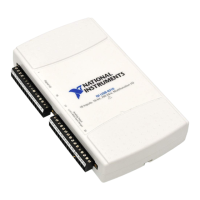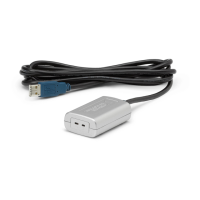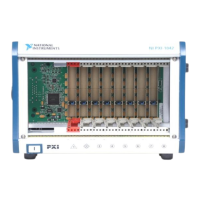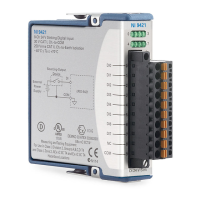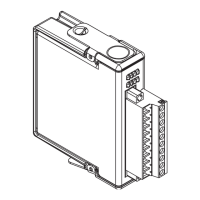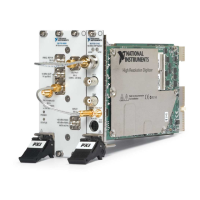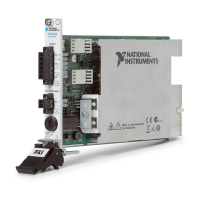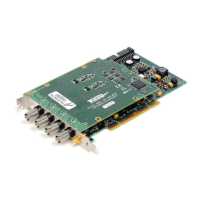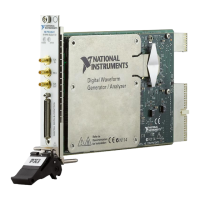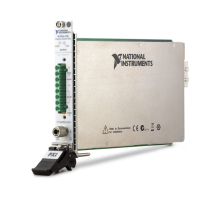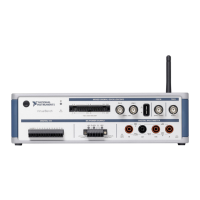Glossary
NI USB-621x User Manual G-2 ni.com
A
A Amperes—the unit of electric current.
A/D Analog-to-Digital. Most often used as A/D converter.
AC Alternating current.
accuracy A measure of the capability of an instrument or sensor to faithfully indicate
the value of the measured signal. This term is not related to resolution;
however, the accuracy level can never be better than the resolution of the
instrument.
ADE Application development environment.
analog A signal whose amplitude can have a continuous range of values.
analog input signal An input signal that varies smoothly over a continuous range of values,
rather than in discrete steps.
analog output signal An output signal that varies smoothly over a continuous range of values,
rather than in discrete steps.
analog trigger A trigger that occurs at a user-selected point on an incoming analog signal.
Triggering can be set to occur at a specific level on either an increasing or
a decreasing signal (positive or negative slope). Analog triggering can be
implemented either in software or in hardware. When implemented in
software (LabVIEW), all data is collected, transferred into system memory,
and analyzed for the trigger condition. When analog triggering is
implemented in hardware, no data is transferred to system memory until the
trigger condition has occurred.
application A software program that creates an end-user function.
arm The process of getting an instrument ready to perform a function. For
example, the trigger circuitry of a digitizer is armed, meaning that it is
ready to start acquiring dat
a
when an appropriate trigger condition is met.
ASIC Application-specific integrated circuit—A proprietary semiconductor
component designed and manufactured to perform a set of specific
functions for a specific customer.
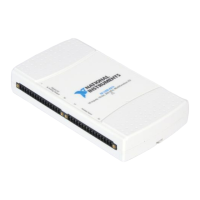
